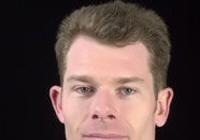Microgravity a health hazard
UNSW researchers may have pinpointed the cause of muscle wasting and bone-density loss experienced by astronauts who fly lengthy missions under the weightless conditions of space.
UNSW researchers may have pinpointed the cause of muscle wasting and bone-density loss experienced by astronauts who fly lengthy missions under the weightless conditions of space.

Australian scientists may have pinpointed the cause of muscle wasting and bone-density loss experienced by astronauts who fly lengthy missions under the weightless conditions of space.
University of New South Wales researchers used a NASA rotating-wall vessel to reproduce microgravity, which is experienced by astronauts in low Earth orbit, to analyse its effect on human embryonic stem cells.
Seventy five percent of the proteins from the cells exposed to microgravity were not found in those grown under normal gravity. The microgravity-exposed cells produced more proteins that negatively regulate bone density and fewer proteins with antioxidant effects. Antioxidants protect the body from reactive oxidants that can damage DNA.
"The finding may explain loss of bone density and muscle wasting experienced by astronauts," says Dr Brendan Burns, a UNSW biologist who led the study with researchers Elizabeth Blaber and Helder Marcal.
"A lot of work has been done on microgravity at a systemic level, such as the effects on the immune system. No-one has really looked at the effect of microgravity at a cellular level and we think that is a huge gap."
Brendan Burns is a Fellow of the Australian Research Council based at UNSW's Australian Centre for Astrobiology. The research was presented this week in Sydney at the 9th Australian Space Sciences Conference.
Read the full story at the Faculty of Science website
Media contact: Dan Gaffney | 0411 156 015 | d.gaffney@unsw.edu.au